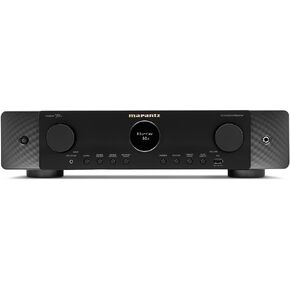- Shopping, made easy.
- /
- Get the app!
The MAX4466 Micphone Module is a micropower operational amplifier optimized for use as a microphone preamplifier.
Using it is simple:
Connect GND to ground, VCC to 2.4-5VDC.
For the best performance, use the "quietest" supply available ( this would be the 3.3V supply).
The audio waveform will come out of the OUT pin. The output will have a DC bias of VCC/2 so when its perfectly quiet, the voltage will be a steady VCC/2 volts (it is DC coupled). If the audio equipment you're using requires AC coupled audio, place a 100uF capacitor between the output pin and the input of your device.
If you're connecting to an audio amplifier that has differential inputs or includes decoupling capacitors, the 100uF cap is not required. The output pin is not designed to drive speakers or anything but the smallest in-ear headphones- you'll need an audio amplifier (such as 3.7W stereo amp) if you want to connect the amp directly to speakers.
If you're connecting to a microcontroller pin, you don't need an amplifier or decoupling capacitor - connect the OUT pin directly to the microcontroller ADC pin.
For audio-reactive projects, we suggest using an FFT driver library which can take the audio input and 'translate' it into frequencies.
Package Included:
6*MAX4466 module
 Phono Turntable Preamp-Mini Audio Stereo Phonograph,Separate DC 12V Power Adapter, RCA Input, RCA Output & Low Noise preamp,Portable, Independent Knob Control Operation -Depusheng PP500, Black
KWD 8
Phono Turntable Preamp-Mini Audio Stereo Phonograph,Separate DC 12V Power Adapter, RCA Input, RCA Output & Low Noise preamp,Portable, Independent Knob Control Operation -Depusheng PP500, Black
KWD 8
 -21%
HiFi Bluetooth 5.0 Tube Power Amplifier Coax/Opt Integrated Audio Amp USB Player
KWD 138.500
-21%
HiFi Bluetooth 5.0 Tube Power Amplifier Coax/Opt Integrated Audio Amp USB Player
KWD 138.500
 -9%
Bluetooth Power Amplifier Board Stereo - HiFi 2.1 Channel 2X220W+350W Bluetooth 5.1 Audio Amplifier Board 12-38V Digital Power Amplifier Module Subwoofer Control with AUX/Bluetooth/USB Flash Drive
KWD 21
-9%
Bluetooth Power Amplifier Board Stereo - HiFi 2.1 Channel 2X220W+350W Bluetooth 5.1 Audio Amplifier Board 12-38V Digital Power Amplifier Module Subwoofer Control with AUX/Bluetooth/USB Flash Drive
KWD 21
 Marantz Cinema 60 7.2-Ch Receiver (100W X 7) - 4K/120 and 8K Home Theater Receiver, Built-in Bluetooth, Wi-Fi & HEOS Multi-Room, Supports Dolby Atmos & DTS:X
KWD 409.500
Marantz Cinema 60 7.2-Ch Receiver (100W X 7) - 4K/120 and 8K Home Theater Receiver, Built-in Bluetooth, Wi-Fi & HEOS Multi-Room, Supports Dolby Atmos & DTS:X
KWD 409.500